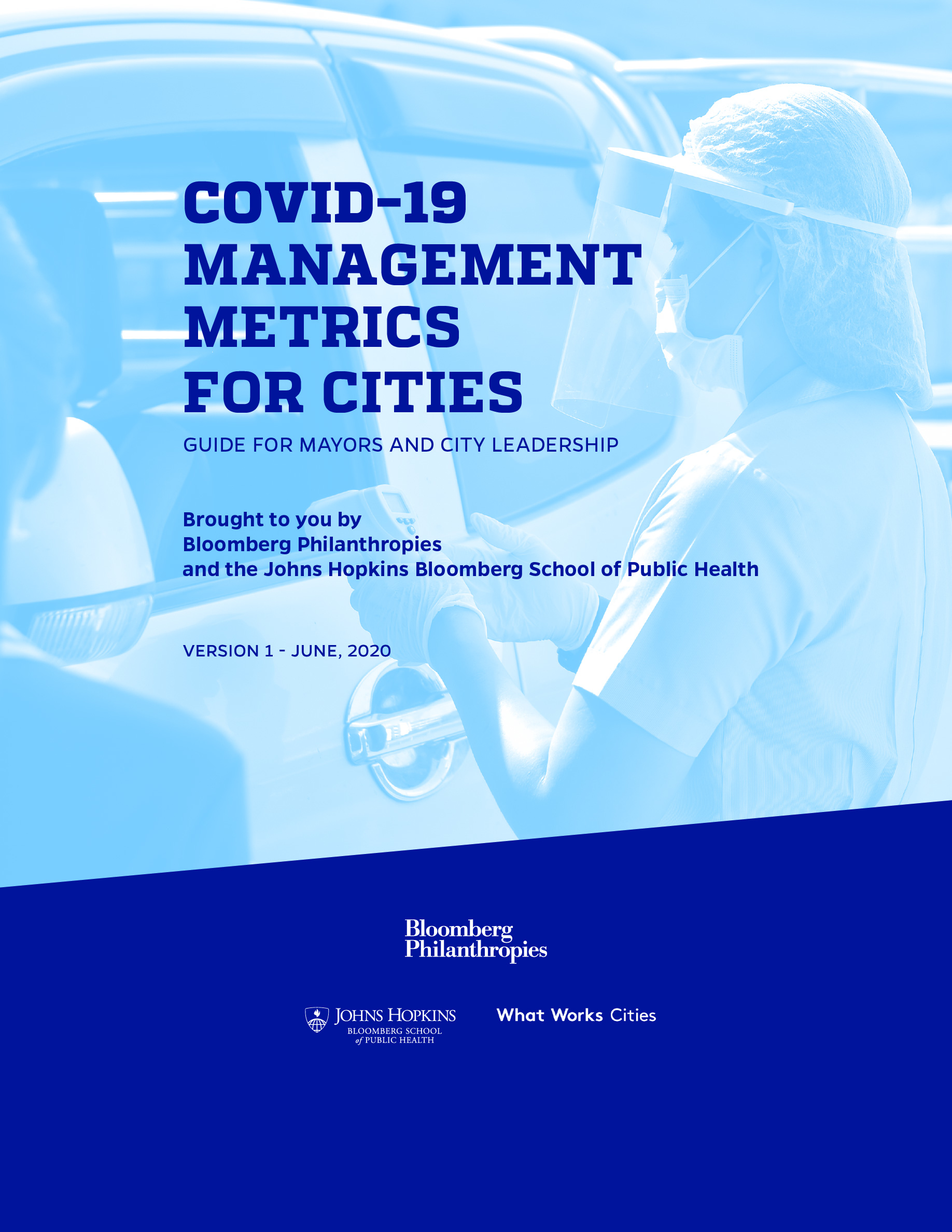Management Metrics for Cities in the COVID–19 Crisis
New Guidance from Johns Hopkins Bloomberg School of Public Health and What Works Cities, brought to you by Bloomberg Philanthropies
COVID-19 has dramatically impacted communities across the United States, with disparate and disproportionate impacts on communities of color. Mayors are positioned to drive a more equitable response and advocate for at-risk populations to ensure the health and safety of all residents. In order to do this effectively, city leaders need data to guide decision making.
Bloomberg Philanthropies brought together the Johns Hopkins School of Public Health and the What Works Cities Initiative to develop this comprehensive set of evidence-based COVID-19 management metrics designed specifically for cities. The Johns Hopkins University Center for Government Excellence and Delivery Associates will help cities effectively use these metrics as part of Bloomberg Philanthropies long-standing mission to support cities’ use of data in local governance and decision making.
If you are interested in receiving technical assistance, please email civicimpact@jhu.edu. Click here to sign up for webinars related to using data to track the spread of COVID-19.
Mayors should continue to collaborate with local public health departments, states, and counties to make evidence-based, data-driven decisions about public health safety measures.
In addition to public health measures, mayors must also make daily city management decisions. To effectively respond to the ongoing COVID-19 crisis responsibly local leaders need to continuously collect, monitor, analyze, and share a wide range of key metrics. They must also understand how and when to use data to make smarter, faster, evidence-based decisions.
These metrics are essential indicators for municipal leaders in the COVID-19 crisis. They include critical indicators that cities should use to guide the next phase of response to the crisis and will be regularly refined as our understanding of the COVID-19 crisis evolves.
This resource helps city leadership make critical decisions and build support for those decisions within city government and with the public. With these indicators, leaders are better equipped to:
- Manage their city: Residents rely on city governments to provide essential services. Mayors may need to make operational decisions based on availability and capacity of these services.
- Communicate clearly with residents: Effective public communications are grounded in reliable data from trusted sources. These data can undergird efforts on the part of city leaders to garner support for policy decisions, including local public health interventions.
- Advocate for at-risk populations and people of color: Mayors are responsible for vulnerable populations as well as communities of color with a history of underinvestment. Disaggregating data by race, gender, age, neighborhood or zip code, census tract, and income level, if possible, helps highlight the disparate impact of COVID-19 on different populations and can help guide resource allocation to work toward a more equitable city, now and in the future.
- Allocate resources according to need: Mayors may need to step in to ensure high-need populations (health care workers, nursing home staff and residents, workers in high-risk professions, as well as underserved communities) are receiving priority access to testing, personal protective equipment (PPE), and more.
The table below lists the metrics contained in the guide. To scroll through the measures, use the arrows on your keyboard or mouse. Click on the magnifying glass icon to search through the metrics.

